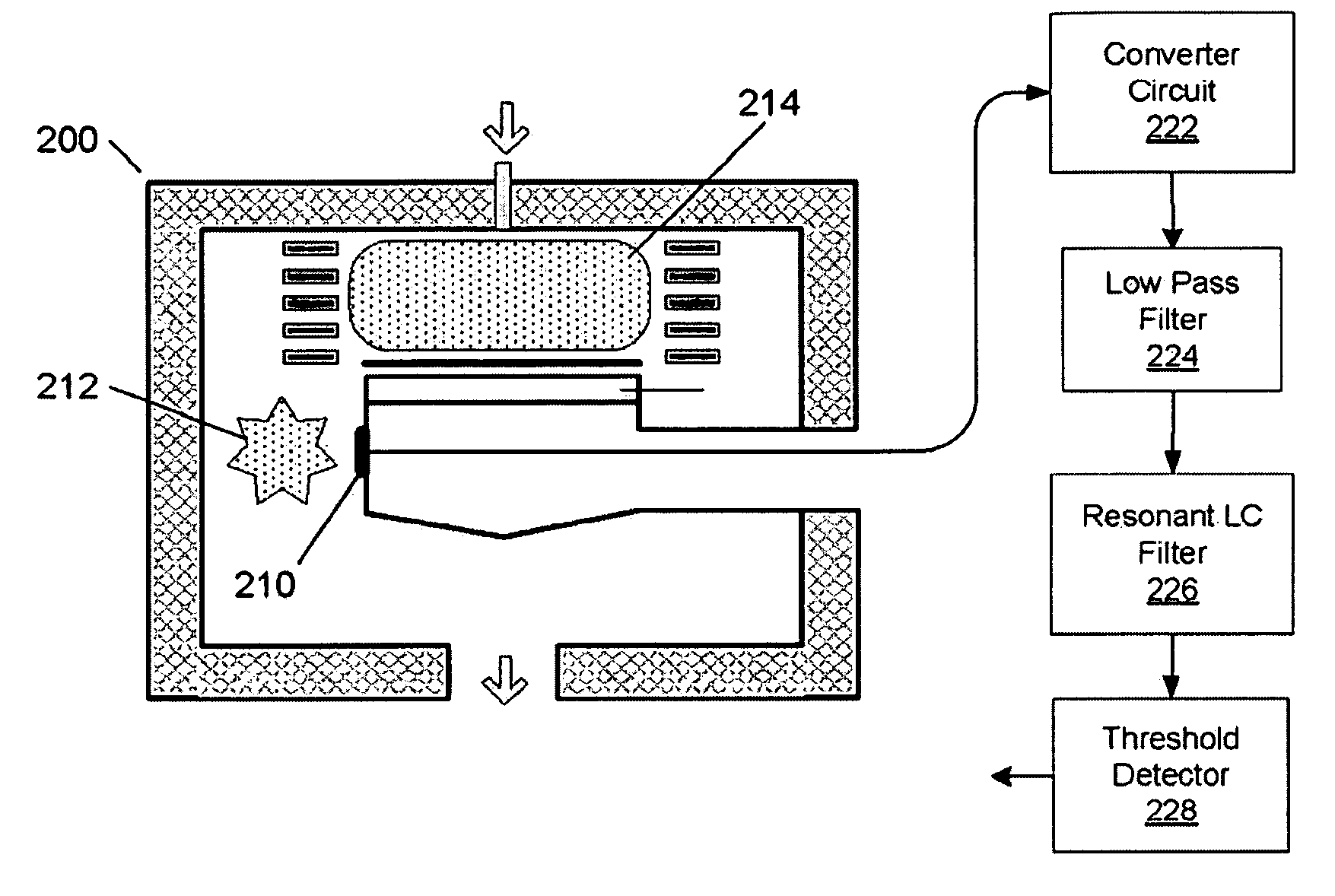In addition, components of processing chamber 102 may experience electrical damage because unconfined plasma 138 may change the path by which plasma power is returned to ground through the chamber.
For example, a plasma may become unconfined if the plasma becomes unstable.
Also, the occurrence of the unconfined-plasma events may be sporadic and may tend to be unpredictable.
In addition, the specific effects that an unconfined-plasma event may have on substrate processing generally cannot be anticipated due to the variable and unpredictable forms exhibited by unconfined plasma.
However, the
operational requirements of
Langmuir-style probes (i.e., that the electrodes are unprotected and that a DC electrical contact with the plasma exists) limit the utility of the
Langmuir-style probes in detecting unconfined-plasma events.
Also, due to the unpredictable nature of the unconfined-plasma events, the
Langmuir-style probes may have to be operating continuously while the substrate is being processed in order to be effective.
However, continuous usage may result in exposing the unprotected electrodes of the Langmuir-style probes to the mixture of
chemical species that is usually present in the chamber during
plasma processing.
The mixture of
chemical species, which includes chemicals supplied for processing of the substrate, new
chemical species generated within the processing plasma, and chemical byproducts formed during the processing of the substrate, typically includes both corrosive components and depositing components that may detrimentally affect the ability of Langmuir-style probes to function properly.
In an example, corrosive components (e.g.,
chlorine,
fluorine, and
bromine, etc.) may cause the Langmuir-style probe to function improperly, such as failing to timely and / or accurately detect an unconfined-plasma event.
In addition, corroded electrodes may become a source of particulate defects and / or
metallic contamination that may indirectly damage the substrate being processed.
In another example, the depositing components of the mixture (e.g., inorganic SiOx-based byproducts and organic CFx-based polymerizers) may result in the formation of an electrically-insulating film on the electrodes of the probe; thus, the film may interfere with the required plasma-
electrode DC contact, thereby preventing the probe from accurately and / or timely sensing the presence of a plasma.
As can be appreciated from the foregoing, the Langmuir-style probes may not be ideal for detecting unconfined-plasma events.
However, the utility of monitoring the bias
voltage to detect unconfined-plasma events is limited by the difficulty in detecting changes in the bias voltage caused by unconfined-plasma events.
Detecting changes in bias voltage is particularly difficult when higher frequency generators (such as 60 MHz) are utilized to generate plasma.
The bias voltage generated by higher frequency generators is small; and since unconfined-plasma events usually occur at lower power levels, detecting the unconfined-plasma event from the small changes in the
DC bias signal may be difficult or impossible.
Therefore the utility of this technique is limited because of the inability to reliably detect unconfined-plasma events.
However, employing the optical sensor to detect unconfined-plasma events may be unsatisfactory in some cases because detecting the light emitted from unconfined plasma 138 may be difficult.
In addition, the positioning of the optical sensor outside of the chamber may make “seeing” the light difficult through the transparent window since the reactive chemicals may cause the transparent window to be less than transparent.
In other words, the reactive chemicals may cause a layer of films to be deposited on the transparent window, thereby significantly reducing the amount and / or quality of light that is detected by the optical sensor.
However, placing windows and / or viewing passages in all locations that may have to be monitored may not always be feasible.
 Login to View More
Login to View More 


